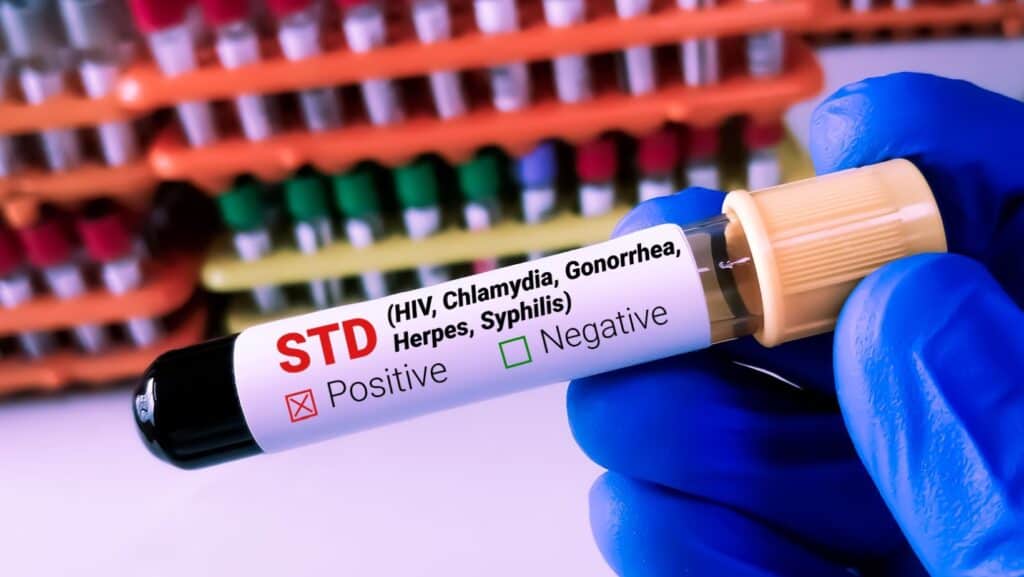Teen STD Rates Are Surging: Is Your Child At Risk?
Sexually transmitted diseases (STDs) remain a significant public health concern in the United States, with certain demographic groups disproportionately affected. This article explores which populations face the highest rates of STDs and examines the complex factors contributing to these disparities. By understanding these patterns, we can better target prevention efforts and improve sexual health outcomes for all.
Age: Young Adults Bear the Brunt

Young adults aged 15-24 consistently show the highest rates of STDs, despite making up only a quarter of the sexually active population. This age group accounts for approximately half of all new STD cases in the United States annually. The CDC reports that chlamydia and gonorrhea rates are particularly high among adolescents and young adults.
Race and Ethnicity: Stark Disparities Persist

CDC data reveals significant racial and ethnic disparities in STD rates. In 2022, Black individuals had the highest rates of chlamydia (1,113.3 cases per 100,000) and gonorrhea (585.9 per 100,000). American Indian and Alaska Native populations faced the highest rates of primary and secondary syphilis (67 per 100,000) and congenital syphilis(644.7 cases per 100,000 live births).
Gender: A Complex Picture

While overall STD rates vary by specific infection, women often face higher rates of certain STDs. For instance, women aged 20-24 reported the highest rates of chlamydia infections in 2021. However, men, particularly those who have sex with men (MSM), show higher rates of syphilis across all age groups.
Sexual Orientation: MSM at Increased Risk

Men who have sex with men (MSM) continue to be disproportionately affected by certain STDs, particularly syphilis. In 2022, MSM accounted for almost half (45.1%) of all male primary and secondary syphilis cases.
Geographic Location: Southern States Lead

STD rates vary significantly by region, with Southern states consistently reporting higher rates. In 2021, the five states with the highest combined rates of chlamydia, gonorrhea, and syphilis were Mississippi, Louisiana, Alaska, South Carolina, and South Dakota.
Socioeconomic Status: A Key Factor

Lower socioeconomic status is strongly associated with higher STD rates. Limited access to healthcare, lack of health insurance, and inadequate sexual health education contribute to this disparity.
Education Level: Knowledge is Power

Studies have shown that individuals with lower levels of education tend to have higher rates of STDs. This correlation likely reflects broader socioeconomic factors and potentially limited access to comprehensive sexual health education.
Incarceration: A Hidden Epidemic

Incarcerated populations face significantly higher rates of STDs compared to the general population. The prison environment, coupled with limited access to healthcare and prevention services, contributes to this disparity.
Substance Use: Increased Vulnerability

Individuals struggling with substance use disorders often face higher rates of STDs. Drug and alcohol use can impair judgment and lead to risky sexual behaviors, increasing the likelihood of STD transmission.
Rural vs. Urban: Access Matters

While urban areas often report higher overall numbers of STD cases, rural communities face unique challenges in STD prevention and treatment. Limited access to healthcare services and STD testing in rural areas can contribute to undiagnosed and untreated infections.
Conclusion

The STD epidemic in the United States disproportionately affects certain demographic groups, with young adults, racial and ethnic minorities, and men who have sex with men facing the highest rates. Complex social, economic, and structural factors contribute to these disparities. Addressing the STD epidemic requires a multifaceted approach that includes improved access to healthcare, comprehensive sexual education, and targeted interventions for high-risk populations. By understanding and addressing these disparities, public health officials can work towards reducing STD rates and improving sexual health outcomes for all Americans.
Are Your Teens Prepared For The Real World? How Many Of These Can Your Teen Check Off?

As teenagers transition into adulthood, it’s crucial for them to develop the skills and knowledge needed to navigate the complexities of the real world. Some adults weigh in on what they have learned: from managing finances to understanding basic life skills, being prepared can make all the difference in their future success and independence. This article explores some essential areas that teens should be familiar with before stepping into adulthood. How many of these can your teen check off? Let’s find out if they’re ready for the challenges ahead!
READ: Are Your Teens Prepared For The Real World? How Many Of These Can Your Teen Check Off?
Is Your Child An Old Soul Or Gifted? How To Tell The Difference

Do you have a young child who says things that make you think, how do they understand that at such a mature level? Or how would they know that; they have never done this before? Or a child who sits down at a piano at age 3 and plays a song they just heard by ear?
Old soul? Gifted? How do you tell the difference? READ: Is Your Child An Old Soul Or Gifted? How To Tell The Difference
Join Us

Join us on this empowering journey as we explore, celebrate, and elevate “her story.” The Queen Zone is not just a platform; it’s a community where women from all walks of life can come together, share their experiences, and inspire one another. Welcome to a space where the female experience takes center stage. Sign up for our newsletter so you don’t miss a thing, Queen!







